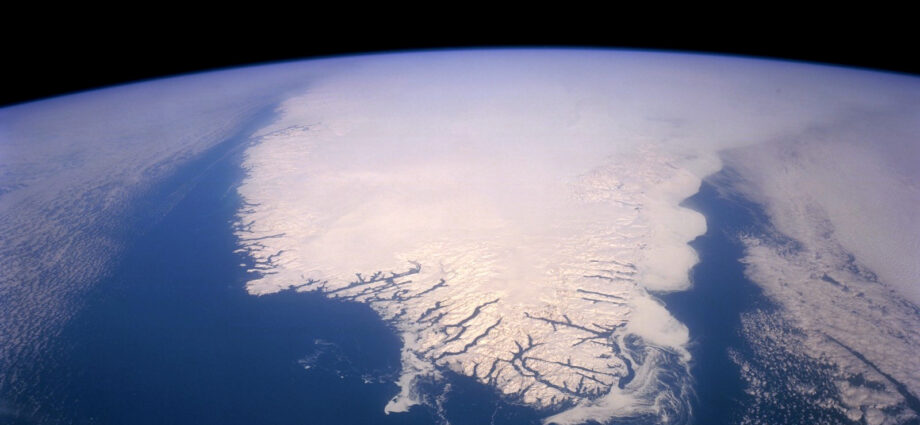
New research reveals that cracks in the Greenland ice sheet are growing in size and depth at an accelerating rate due to climate change
February 12, 2025
The Greenland ice sheet is cracking at an accelerated rate due to the impacts of climate change, according to a new study by Durham University researchers.
Spanning over 1.7 million square kilometres, the Greenland ice sheet is the second largest body of ice on Earth after Antarctica.
Using thousands of satellite-imagery-based surface maps, the researchers assessed the evolution of cracks in the Greenland ice sheet’s surface. They found that between 2016 and 2021, the size and depth of these crevasses increased at a previously unseen rate.
In terms of total mass, the ice sheet has lost over a trillion tonnes since the 1980s. But researchers are now seeing unprecedented rates of melting that have large impacts on sea levels around the world.
“The biggest thing I was surprised about was how fast this was happening,” said the study’s lead author Dr. Tom Chudley, a professor at Durham University in the United Kingdom. “One previous study showed changes over the scale of decades… and now we’re showing this happening on scales of five years.”
The Greenland ice sheet has been responsible for an estimated 14 millimetres of sea level rise globally since 1992, largely due to the melting ice caps. Hotter temperatures around the globe, along with warmer ocean temperatures, have created an environment in which the melting ice is flowing more and more into the ocean.
The Durham study also predicts that this acceleration will only continue with the rate at which the climate is currently changing. To what extent, however, is somewhat unpredictable, as Dr. Chudley explains:
“Several of our large-scale models struggle to account for a lot of what we call dynamic instabilities. These are things related to the glacier moving and getting faster … dynamic instabilities are causing potentially up to a metre of sea level rise by 2100, and 10 metres of sea level rise by 2300.”
Chudley hopes that his team’s research can be used to better forecast future sea level rise.
“We desperately need to be better able to project sea level rise, because we need to be able to plan, to mitigate and adapt to sea level rise over the next three centuries.”
A previous study published in early 2024 out of the United States found that 20% of ice around the edges of the Greenland ice sheet had been lost between 1985 and 2022. This study estimated that 20% of the observable sea level rise since 2002 was due to what was happening in Greenland.
Rising sea levels pose an increasing threat to island communities and coastal cities across the globe. One of the more direct repercussions of global warming, rising sea levels are yet another symptom of the ongoing climate crisis that is causing deadly weather events worldwide.
Just last year, United Nations Secretary-General António Guterres warned that the “surging seas are coming for us all.”
Guterres argued that addressing the climate crisis head on is the only way to fully tackle rising sea levels, which are being temporarily fought with sea walls in many Pacific island communities. Many communities in the Caribbean and Pacific have already seen their territories ravaged by a rise in sea level.
“Only by limiting warming to 1.5 degrees Celsius do we have a fighting chance of preventing the irreversible collapse of the Greenland and West Antarctic ice sheets — and the catastrophes that accompany them,” Guterres said.
Chudley and his team’s research indicates a lot more needs to be done, as the Greenland ice sheet deteriorates faster and faster.
Subscribe to our newsletter.
This article was originally published on IMPAKTER. Read the original article.

